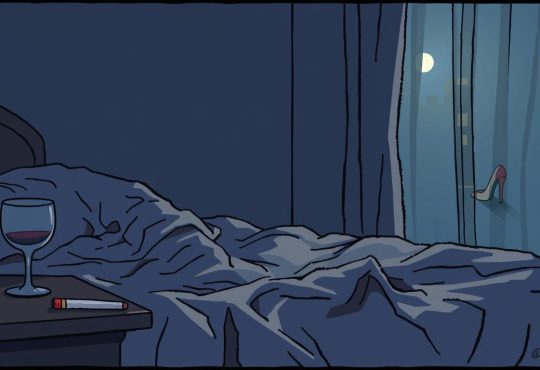
Have you ever wondered what subtle changes might indicate a partner’s infidelity? Relationships thrive on trust, but when doubts creep in, it can feel overwhelming. Understanding the signs of cheating can help you navigate this emotional terrain with clarity and care.
Physical signs, like sudden changes in appearance or behavior, can often hint at deeper issues. Emotional distancing or unexplained absences might also raise red flags. While these cues don’t always confirm infidelity, they can serve as a starting point for honest conversations.
This guide explores both subtle and obvious signs, helping you approach the situation thoughtfully. Remember, evidence and clear patterns are key before making any conclusions. Let’s dive into understanding these signals together.
On this Page:
- 1 Understanding the Signs of Betrayal
- 2 Changes in Sexual Behavior and Intimacy
- 3 Observable Physical Signs to Watch For
- 4 Uncharacteristic Social Habits and Schedule Shifts
- 5 Subtle Emotional and Communication Shifts
- 6 how to tell if your boyfriend has slept with someone else
- 7 Technology and Secrecy: Guarding Phones and Digital Footprints
- 8 Shifts in Personal Style and Grooming Habits
- 9 Trusting Your Instincts and Recognizing Patterns
- 10 Conclusion
Understanding the Signs of Betrayal
Recognizing the early signs of betrayal can help you address concerns before they escalate. Trust is the foundation of any relationship, and when it’s compromised, subtle shifts in behavior often emerge. These changes can serve as red flags, guiding you to uncover deeper issues.
Emotional and Behavioral Red Flags
Emotional distancing is one of the most common signs of betrayal. A partner may become less communicative or avoid discussing certain topics. Guilt can also manifest as overcompensation, where they suddenly become overly attentive or defensive.
Inconsistent stories or lack of transparency can further erode trust. For example, a person might struggle to explain their whereabouts or provide vague answers. These behaviors often indicate a deeper issue that needs addressing.
Physical Indicators to Observe
Physical cues, such as avoiding eye contact, can be telling. A partner who feels guilty may struggle to maintain direct gaze during conversations. Subtle body language, like crossed arms or fidgeting, can also signal discomfort.
It’s important to look for a pattern of evidence rather than focusing on isolated incidents. Multiple signs aligning over time are more reliable indicators of betrayal. By paying attention to these cues, you can approach the situation with clarity and care.
Changes in Sexual Behavior and Intimacy
Sexual dynamics often reflect deeper emotional connections or potential issues. In a healthy relationship, intimacy ebbs and flows naturally. However, sudden or unexplained changes can signal underlying concerns.
It’s essential to distinguish between normal fluctuations and red flags. For example, stress or life changes can affect intimacy levels. But when paired with other signs, shifts in sexual behavior may point to a deeper issue.
Lost Interest versus Suspicious New Moves
A decline in sexual interest can be a red flag, especially if it’s sudden and unexplained. While it’s common for couples to experience lulls, a persistent lack of desire may indicate emotional distance or an affair.
On the other hand, new sexual behaviors or fantasies can also raise questions. If a partner introduces moves or preferences that seem out of character, it might suggest experiences outside the relationship.
Context is key. Stress, health issues, or emotional challenges can impact intimacy. Clear evidence and patterns are essential before drawing conclusions. By observing these changes thoughtfully, you can address concerns in a constructive way.
Observable Physical Signs to Watch For
Physical changes in a partner’s routine can sometimes reveal hidden truths. Subtle shifts in appearance or habits might hint at deeper issues. Paying attention to these cues can help uncover patterns that deserve closer examination.
The “Sweaty, Freshly-Showered” Clue
One common physical sign is arriving home appearing freshly showered or sweaty. This could mask evidence of intimacy with another person. For example, a man might shower immediately after being out to remove traces of another’s scent.
While this behavior alone isn’t proof, it’s worth noting if it becomes a pattern. Context matters—stress or exercise could explain it. But paired with other signs, it might raise suspicions.
Unexplained Perfume and Grooming Changes
Sudden changes in grooming or perfume use can also be red flags. A partner might adopt new scents or grooming habits to cover up traces of an affair. These alterations often feel out of character and deliberate.
For instance, a man who suddenly starts wearing cologne he never used before might be trying to mask another’s scent. Similarly, abrupt changes in hairstyle or clothing could signal a shift in his life.
What matters most is consistency. Multiple physical signs aligning over time are more telling than isolated incidents. By observing these cues thoughtfully, you can approach the situation with clarity and care.
Uncharacteristic Social Habits and Schedule Shifts
Shifts in daily routines can reveal hidden truths about a relationship. When a partner’s schedule becomes unusually hectic or inconsistent, it’s worth paying attention. These changes might hint at deeper issues, especially when paired with other red flags.
Frequent Late Nights and Unusual Work Excuses
Repeated late nights or sudden work trips can be concerning. While occasional overtime is normal, a persistent pattern might signal something more. For example, a partner who frequently stays out late without a clear reason could be hiding something.
Inconsistent explanations about their day can further erode trust. Vague answers or sudden changes in routine often indicate a lack of transparency. Over time, these behaviors can strain a couple’s connection.
It’s essential to evaluate these shifts in the broader context of other behaviors. Multiple signs aligning over time are more telling than isolated incidents. Clear and consistent explanations are key to maintaining trust in any relationship.
Subtle Emotional and Communication Shifts
Subtle shifts in communication can often reveal underlying emotional truths. When a partner’s behavior changes, even in small ways, it might hint at deeper issues. These cues can help us understand what’s really going on beneath the surface.
Avoidance of Eye Contact and Guilt Signals
One common sign is avoiding eye contact during conversations. This can signal hidden guilt or discomfort. A partner who struggles to maintain a direct gaze might be wrestling with unspoken emotions.
Subtle changes in tone or mood can also be telling. For example, a partner might become more defensive when questioned. This defensiveness often reflects suppressed feelings or a desire to avoid confrontation.
Nervousness or evasive responses can further raise suspicions. If a partner seems unusually anxious or avoids answering directly, it’s worth paying attention. These behaviors, when part of a broader pattern, can indicate deeper concerns.
It’s important to trust your sense of what feels off. Even minor shifts in communication style can warrant a closer look. By observing these changes thoughtfully, we can approach the situation with clarity and care.
how to tell if your boyfriend has slept with someone else
Behavioral patterns often reveal more than words ever could. When trust is questioned, observing consistent evidence can provide clarity. We’ll explore key behavioral signs and digital clues that might indicate a partner’s infidelity.
Key Behavioral Evidence to Consider
Consistent behavioral changes can point toward a partner’s infidelity. For example, sudden defensiveness or overprotectiveness with their phone might signal secrecy. A cheater may also avoid certain topics or become unusually anxious when questioned.
Another red flag is unexplained changes in daily habits. If a person starts working late frequently or becomes overly secretive about their schedule, it’s worth noting. These shifts, when paired with other signs, can strengthen the case for infidelity.
Digital Clues and Lifestyle Anomalies
Digital footprints often leave behind subtle clues. A partner who suddenly guards their phone or changes passwords frequently might be hiding something. Secretive communication patterns, like deleting messages or using encrypted apps, can also raise suspicions.
Lifestyle anomalies, such as new hobbies or unexplained expenses, can further hint at infidelity. For instance, a cheater might spend more money on entertainment or gifts for another person. These changes, when combined with behavioral evidence, paint a clearer picture.
It’s essential to interpret these signs thoughtfully. While one anomaly might not confirm infidelity, a combination of behavioral and digital clues can provide stronger evidence. Trust your instincts and approach the situation with care.
Technology and Secrecy: Guarding Phones and Digital Footprints
Technology has reshaped how we connect, but it can also hide secrets. In relationships, phones and devices often serve as gateways to both intimacy and concealment. When trust is questioned, digital habits can reveal hidden truths.
One common red flag is a sudden increase in phone privacy. A partner might start using passwords more frequently or keep their device hidden. These behaviors often signal something is being concealed.
Increased Phone Privacy and Password Use
When a partner guards their phone closely, it’s worth paying attention. For example, they might change passwords often or avoid leaving their device unattended. These actions can indicate a desire to hide digital footprints.
Real-world instances show that phone guarding is often a crucial indicator of betrayal. A partner who becomes overly protective of their device might be hiding messages or apps. These habits, when paired with other signs, can strengthen suspicions.
It’s essential to approach these behaviors thoughtfully. While increased phone privacy doesn’t always mean infidelity, it’s a sign worth discussing. Open communication about digital habits can help rebuild trust and clarity in any relationship.
Shifts in Personal Style and Grooming Habits
Personal style and grooming habits often reflect deeper emotional shifts. When a partner suddenly revamps their appearance, it might signal more than just a new look. These changes can sometimes hint at hidden motivations, especially when they feel out of character.
One thing to consider is the context of these shifts. While updating a wardrobe or grooming routine can be a positive thing, an unexplained overhaul may raise questions. For example, a partner who suddenly starts wearing cologne they never used before might be trying to impress someone new.
New Wardrobe Choices and Grooming Routines
Abrupt changes in personal style can be a red flag. A partner might adopt new clothing trends or hairstyles to align with a different lifestyle. These shifts often accompany other behavioral differences, like increased secrecy or emotional distancing.
Research shows that around 70% of women notice grooming changes when infidelity is suspected. This includes sudden attention to fitness, skincare, or even dental hygiene. While these habits can be healthy, their sudden appearance might indicate a desire to appeal to someone else.
It’s important to look at these changes in the broader context of your relationship. One isolated shift might not mean much, but a combination of style and behavioral changes can be telling. Trust your instincts and approach the situation with care.
In the world of relationships, communication is key. If something feels off, it’s worth discussing openly. Addressing concerns early can help rebuild trust and clarity, ensuring both partners feel valued and understood.
Trusting Your Instincts and Recognizing Patterns
Trusting your instincts is often the first step in uncovering relationship concerns. While isolated incidents may not always signal trouble, recurring patterns can provide clearer insights. Evaluating these patterns over time helps us make informed decisions.
One anomaly doesn’t confirm infidelity, but a consistent pattern of behavior does. For example, repeated emotional distancing or unexplained absences might indicate deeper issues. Research shows that 70% of individuals who suspected infidelity were ultimately correct, highlighting the importance of trusting your gut.
Evaluating Consistency Over Time
Tracking behavioral changes over weeks or months can reveal meaningful patterns. Emotional cues, like a lack of eye contact or sudden defensiveness, often align with other red flags. Digital evidence, such as secretive phone use, can further strengthen your observations.
Context matters. Stress or life changes can explain some shifts, but a combination of signs is more telling. By weighing all factors, you can approach the situation with clarity and care. Trust your instincts, but let evidence guide your conclusions.
Conclusion
Understanding the signs of infidelity requires careful observation and thoughtful reflection. While one sign alone may not confirm an issue, a consistent pattern of behavior can provide clearer insights. Emotional distancing, changes in routine, and digital secrecy are all potential red flags worth noting.
Trust your sense of what feels off. Pay attention to shifts in communication, mood, or physical habits. These changes, when combined, can paint a more complete picture. Open dialogue is key to addressing concerns and rebuilding trust in any relationship.
Every relationship is unique, and thoughtful reflection is essential. Whether you choose to repair or move forward, prioritize your self-worth. Healthier, more transparent connections are always possible with effort and care.










